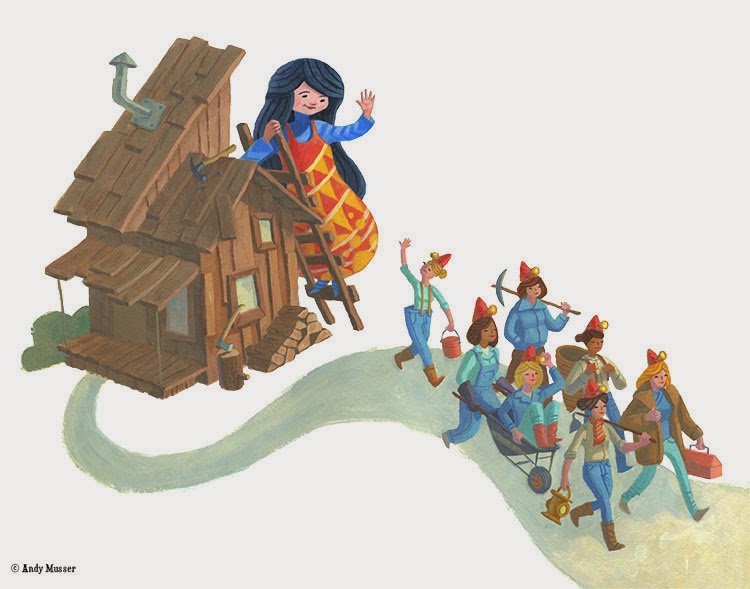“An activity that involves making something in a skillful way by using your hands”
“Skill in planning, making, or executing”
“Skill in deceiving to gain an end <used craft and guile to close the deal>”
Ok, perhaps not that last one as much. But it does bring up a good point, that our ultimate goal as authors/illustrators is to tell stories that use illusion to make a kind of magic that the viewer wants to believe in. In my experience, the most reliable way to do this is through developing a solid foundation in craftsmanship.
Here’s a checklist I use when illustrating:
1. Idea (or project brief/manuscript)
2. Write outline/thumbnail
9. Design compositions (at this point, evoke emotion using only basic shapes)
10. Line drawing
11. Value Study
12. Color Study
13. Final Painting
When I skip a step in this process, I find that I stop relying on the dependability of my craft and instead start relying on luck. I do think experimentation and a certain level of risk are important, but I try to balance them with organization and preparation.
A teacher once told me, there are two ways to make a good image, you can either use time or method. If you use time, all you have to do is keeping working until you’re happy with your art…or pass out from exhaustion. If you learn the principles behind what makes art effective, then you can create a method that’s usually much quicker and less likely to make you pass out. That may sound really boring and stifling, but remember, you can have as many different methods as you want and you can also make experimentation part of your method.
Studying craft has reminded me of how important craftsmanship is to successful storytelling and communicating clearly with readers. I believe that every artist must find their own approach to craft, which I know is both encouraging and overwhelming. But I like to think it’s mostly encouraging, because you have the opportunity to create things no one has seen before in ways no one has ever imagined. So go out, do your picture book thang, and use craft as a tool to tell delightful new stories, I look forward to reading them!
To close, I leave you with a few inspirational quotes about craft that always make me feel motivated:
“Try not to think of your craft as a business. Try to think of it exclusively as ‘personal work.’" - Marshall Arisman
“There is no ‘gift’ or talent so great that it can dispense with the need for fundamental knowledge, much diligent practice, and hard effort.” - Andrew Loomis
“The greats weren't great because at birth they could paint. The greats were great cause they paint a lot.” - Macklemore & Ryan Lewis

















Thank you, Andy for sharing your creative process; this post is a real treasure.
ReplyDeleteLinking to it from my blog.
Great post, Andy! I really like the checklist. Linking to it from my blog. - Nile
ReplyDelete